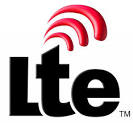The Global Mobile Suppliers Association reported this week that there are now more than 1,500 LTE-enabled user devices available, confirming more than 90% annual growth.
The GSA said that 742 new LTE devices were launched in the past year, and the number of manufacturers increased 58% to 154 companies.
Smartphones make up the largest category of devices, accounting for more than 40% of the total, but the GSA noted that LTE-enabled tablets and personal hotspots (MiFi) are also growing. Also, 99% of LTE smartphones are multi-mode and operate on both 4G and 3G networks.
The most widely-used band for LTE continues to be 1800 MHz — however, LTE still faces significant spectrum fragmentation, as 1800 MHz represents less than half of LTE single-band or multi-band networks: 43%. Among LTE user devices, 589 using 1800 MHz (Band 3) have been announced, with an annual growth rate of 152%.
TDD is continuing its emergence onto the LTE stage. While the majority of devices are still FDD, the GSA noted that 387 products can now operate in TD-LTE, which is 221 more than a year ago. Only about 11% of LTE mobile operators have deployed TDD — however, the technology is being used or trialed by some of the largest carriers in the world, including China Mobile.
The GSA also examined the role of 3G networks, and reported that HSPA is the dominant 3G technology, used in 547 commercial networks. The group noted that more than 2/3 of those operators have launched HSPA+ and that “investment in 42 Mbps DC-HSPA+ systems is a major growing trend.”
Alan Hadden, president of the GSA, said that 36% of LTE smartphones and 26% of LTE-connected tablets can operate on 42 Mbps DC-HSPA+ networks.
Meanwhile, the push for more efficiency and speed continues. A total of 233 Category 4 LTE devices, which can handle peak downlink rates up to 150 Mbps, now represent nearly 15% of all LTE devices, and operators in at least 25 countries have commercially launched networks that can support those speeds.
4G Americas noted earlier this month that in North America, AT&T has launched Carrier Aggregation (CA) in its Chicago market, without a commercial announcement. 4G Americas says there are currently seven LTE-Advanced networks in the world, not counting AT&T’s, and that it expects all four U.S. carriers to have LTE-A features in their networks by the end of this year.
Meanwhile, despite the delays in deploying VoLTE, there are 57 phones (including carrier and frequency variations), that support Voice over LTE. That number shows promising growth for the VoLTE ecosystem, as the GSA reported in January that there were only 30-some devices available with VoLTE compatibility.
The GSA expects the number of LTE networks to be at least 350 commercial networks in service by the end of this year, up from 275 currently.
Read the full report.
Want more network news? Follow me on Twitter! @khillrcr


